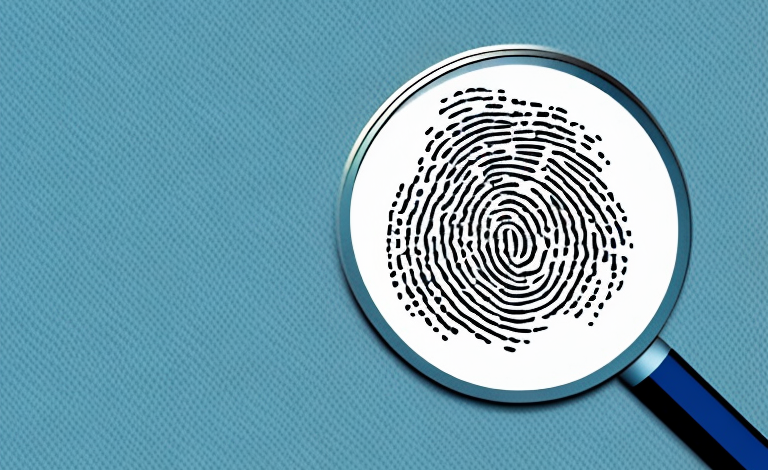In recent years, fingerprint sensors have become an increasingly common feature on smartphones and other electronic devices. While they offer a convenient way to unlock your device, authenticate payments, and access secure data, some people have expressed concerns about their safety. Can fingerprint sensors cause harm to your skin or damage your device? In this article, we’ll take a closer look at the science behind fingerprint sensors and explore their potential benefits and risks.
The science behind fingerprint sensors
Fingerprint sensors work by capturing images of the unique ridges and valleys on the surface of the skin. The sensors use a technique called capacitance sensing to detect the tiny electrical charges that are generated by the ridges and valleys. When you place your finger on the sensor, it creates a temporary electrical circuit that allows the sensor to read your fingerprint. The sensor then compares the captured image with stored images to determine whether to grant access or perform a specific action.
One of the advantages of fingerprint sensors is their high level of accuracy. The unique patterns on each person’s fingertips are so distinct that the chance of two people having the same fingerprint is extremely low. This makes fingerprint sensors a reliable and secure method of authentication for devices such as smartphones and laptops. Additionally, fingerprint sensors are becoming more common in industries such as healthcare and finance, where security is of utmost importance.
Understanding the technology of fingerprint sensors
Fingerprint sensors can be divided into two main types: optical and capacitive. Optical sensors use light to capture images of the fingerprint, while capacitive sensors use electrical current. Capacitive sensors are the most common type of fingerprint sensor used in smartphones and other electronic devices. They are generally more secure and accurate than optical sensors and are less affected by external factors such as lighting and moisture.
Capacitive sensors work by creating an electrical field on the surface of the sensor. When a finger is placed on the sensor, the electrical field is disrupted, and the sensor can detect the unique pattern of ridges and valleys on the fingerprint. This pattern is then compared to a stored database of fingerprints to determine if there is a match. Capacitive sensors are also able to detect the temperature of the finger, which can help prevent spoofing attempts using fake fingerprints made of materials such as silicone or gelatin.
How do fingerprint sensors work?
When you place your finger on a capacitive fingerprint sensor, it creates a temporary electrical circuit between the sensor’s electrodes and the subdermal layers of your skin. The sensor then measures the electrical resistance of your skin, which varies depending on the ridges and valleys of your fingerprint. This information is used to create a unique digital signature that is compared against stored signatures to authenticate your identity.
Fingerprint sensors are commonly used in smartphones, laptops, and other electronic devices for security purposes. They are considered to be more secure than traditional passwords or PINs, as they are unique to each individual and cannot be easily replicated. However, it is important to note that fingerprint sensors are not foolproof and can be bypassed by skilled hackers or with the use of fake fingerprints.
The benefits of using fingerprint sensors
There are numerous benefits to using fingerprint sensors on your electronic devices. Firstly, they are convenient and fast. You can unlock your device or authenticate payments with just a touch of your finger. Secondly, they provide a high level of security. Your fingerprint is unique and cannot be easily replicated or stolen. Finally, they are more hygienic than traditional methods of authentication such as passwords or PINs. With no need to remember complex passwords, you are less likely to share your personal data with others or fall victim to cybercrime.
Another benefit of using fingerprint sensors is that they can be used for multiple purposes. For example, you can use your fingerprint to access different apps or services on your device, without the need for separate passwords or logins. This can save you time and make your overall user experience more seamless.
Additionally, fingerprint sensors are becoming more advanced and can now detect more than just your fingerprint. Some sensors can also detect your heart rate, blood oxygen level, and other biometric data. This can provide additional health and wellness benefits, as you can track your fitness and monitor your overall health using just your device.
Are there any risks associated with using fingerprint sensors?
While fingerprint sensors are generally safe to use, there are some potential risks and concerns. One of the most common concerns is the impact of regular use on the skin. Some people worry that the sensors could cause skin irritation or damage with prolonged use. However, studies have shown that the risk of harm is minimal, and in most cases, the sensors do not cause any adverse effects.
Another potential risk associated with fingerprint sensors is the possibility of false positives or false negatives. This means that the sensor may not recognize a valid fingerprint or may recognize an invalid fingerprint as valid. This can lead to security breaches or inconvenience for the user. However, advancements in technology have greatly reduced the occurrence of false readings.
It is also important to note that fingerprint data is stored on the device or server that uses the sensor. This means that there is a risk of the data being hacked or stolen. To mitigate this risk, it is recommended to use devices with strong security measures and to regularly update passwords and security settings.
Exploring the potential dangers of fingerprint sensors
There have been some reports of fingerprint sensors being hacked or compromised, which could put sensitive data at risk. While these cases are relatively rare, they highlight the importance of choosing a reputable device manufacturer and keeping your device’s software up to date with the latest security patches.
Another potential danger of fingerprint sensors is the possibility of false positives or false negatives. In some cases, the sensor may not recognize a valid fingerprint, leading to frustration and inconvenience for the user. On the other hand, it is also possible for the sensor to mistakenly identify someone else’s fingerprint as a match, potentially allowing unauthorized access to sensitive information.
Additionally, there are concerns about the collection and storage of biometric data. Fingerprint sensors require users to provide their unique biometric information, which can be a cause for privacy concerns. If this data is not properly secured, it could be vulnerable to theft or misuse. It is important for device manufacturers to have strong security measures in place to protect this sensitive information.
Could fingerprint sensors cause harm to your skin?
There is some evidence to suggest that frequent use of fingerprint sensors could cause minor damage to the outermost layers of the skin. However, the risk of harm is minimal, and most people should not experience any adverse effects. If you are concerned about skin irritation or damage, you can take steps to minimize the risk, such as cleaning your device regularly, using a protective case or cover, and taking breaks from using the sensor excessively.
It is important to note that the potential harm caused by fingerprint sensors is not unique to this technology. Many other devices that require frequent contact with the skin, such as fitness trackers and smartwatches, can also cause minor skin irritation or damage. Therefore, it is important to be mindful of how often you use these devices and to take steps to protect your skin.
The impact of regular use on fingerprint sensor functionality
Over time, fingerprint sensors can become less accurate or stop working altogether. This can be due to a variety of factors, including wear and tear, exposure to moisture or chemicals, or software issues. To keep your sensor functioning correctly, it’s essential to keep your device clean and dry, avoid using harsh chemicals or abrasive materials on the sensor, and follow the manufacturer’s guidelines for maintenance and care.
In addition, it’s important to note that certain medical conditions or injuries to the fingers can also affect the accuracy of fingerprint sensors. For example, if you have a cut or burn on your finger, or if you have a skin condition such as eczema or psoriasis, the sensor may not be able to read your fingerprint correctly. If you experience persistent issues with your fingerprint sensor, it’s recommended to contact the manufacturer or a qualified technician for assistance.
Best practices for taking care of your device’s fingerprint sensor
To protect your device’s fingerprint sensor and ensure that it remains functional and secure, there are a few best practices you can follow. Firstly, keep your device clean and dry by wiping it down regularly with a soft, dry cloth. Secondly, avoid using harsh chemicals or abrasive materials that could scratch or damage the sensor. Thirdly, avoid exposing the sensor to extreme temperatures, moisture or humidity, which can cause damage or affect performance. Finally, follow the manufacturer’s guidelines for maintenance and care, and keep your device’s software up to date with the latest security patches and updates.
Debunking common myths about fingerprint sensors
There are several common myths and misconceptions about fingerprint sensors that need to be cleared up. One of the most common is that the sensors can be fooled by a simple photocopy of a fingerprint. In reality, fingerprint sensors are sophisticated enough to detect fake fingerprints and are much more secure than traditional authentication methods.
Alternatives to using a device’s built-in fingerprint sensor
If you are uncomfortable using your device’s built-in fingerprint sensor, or if it is not available on your device, there are alternative authentication methods you can use. These include facial recognition, voice recognition, and PIN or password-based authentication. However, it’s important to note that these methods may not be as secure or as convenient as fingerprint authentication.
What to do if you experience issues with your device’s fingerprint sensor
If you experience issues with your device’s fingerprint sensor, such as it not registering your fingerprint or responding slowly, there are several steps you can take. Firstly, try cleaning the sensor with a soft, dry cloth and rebooting your device. If this doesn’t work, check for software updates or contact the device manufacturer for assistance. In some cases, the sensor may need to be replaced or repaired.
The future of biometric technology and its role in device security
Biometric technology, such as fingerprint sensors, is likely to play an increasingly important role in device security in the future. As technology continues to evolve, we can expect to see more sophisticated and secure biometric authentication methods, such as iris scanning or facial recognition. While there are some risks and concerns associated with biometric technology, the benefits of increased security and convenience are significant.
In conclusion, while there are some potential risks and concerns associated with using fingerprint sensors, they are generally safe and secure to use. By following best practices for maintenance and care, you can ensure that your device’s sensor remains functional and reliable. As technology continues to evolve, we can expect to see more innovative and secure biometric authentication methods that will help to keep our devices and data safe.



